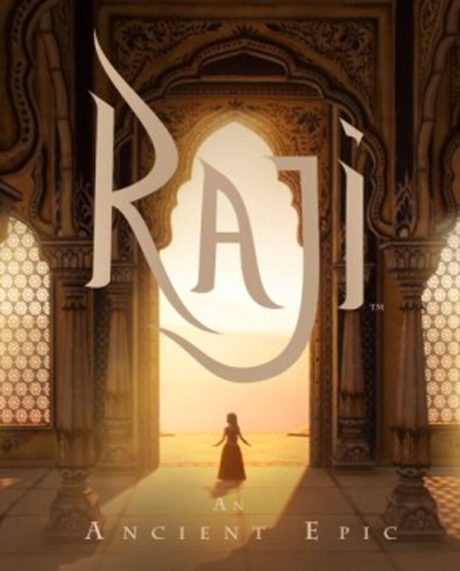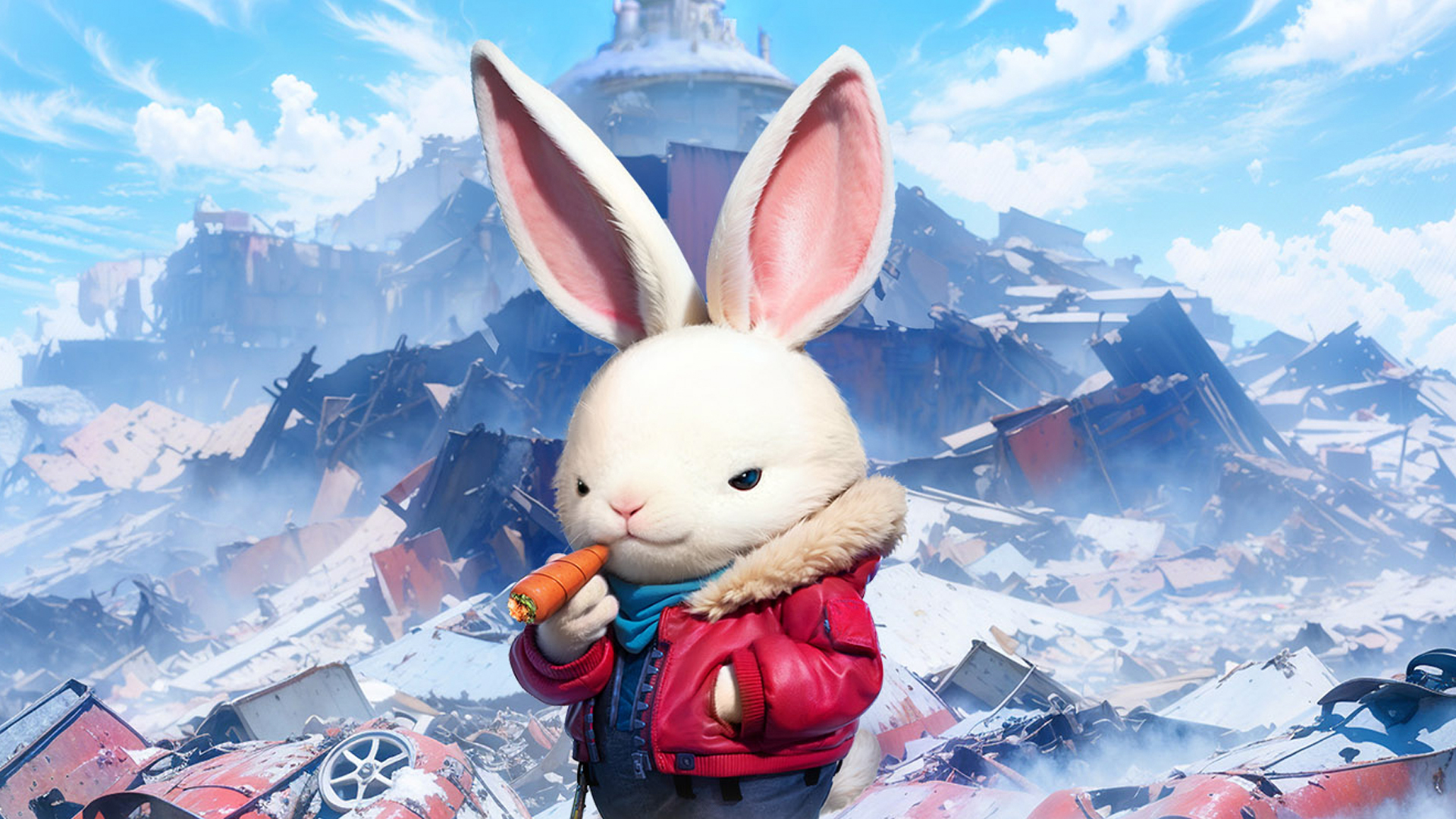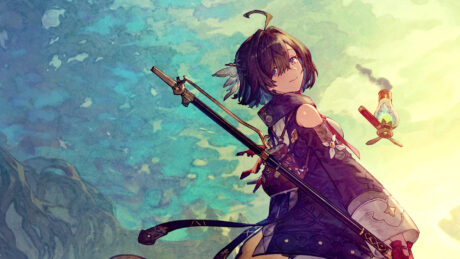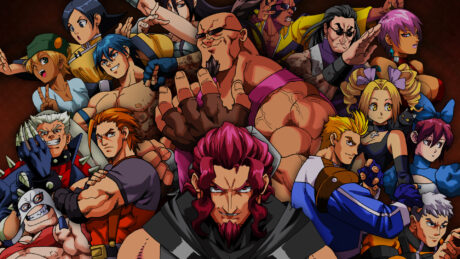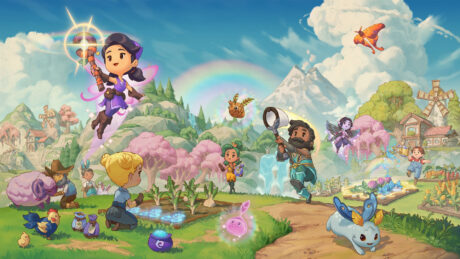Purrr....
- Stunning visuals and music
- Fun, dungeon-crawling experience
- Frequent auto-save checkpoints
Hisss!
- Repetitive battles
- Tough bosses
- Lack of camera distance control
Platform
Switch, PlayStation 4, Xbox One, PCPublisher
Super.comDeveloper
Nodding Heads GamesGenre
Action, Adventure, Puzzle, OtherPlayers
1File Size (Minimum)
6.0 GBRelease Date (NA)
Aug 18, 2020Raji: An Ancient Epic was developed by Nodding Heads Games, an indie group founded in 2017. The game was released on Nintendo Switch in August 2020, with the Steam, Xbox One, and PlayStation 4 versions coming out in October 2020. The company consists of a small group of developers from around the globe who wanted to create a game that represents the myths and lore from their heritage. Nodding Heads Games takes influences from Hindu legends and Balinese mythology, as well as games like Ico, God of War, Journey, and Bastion.


An Ancient But Interesting Story

The story focuses on a heroine named Raji who is caught up in a war between demons and the gods. With the help of the gods, she embarks on a quest to save her brother, Golu, who has been taken by the demons. During the game, the gods will speak to her directly, giving her wisdom and tools in the form of weapons to help in battles. In some sections, the various gods have voiced dialogue with each other about Raji’s progression or fate. (Subtitles in various languages are available so that you can understand the unfamiliar words and terms of mythology involved in the dialogue.) In the transitions between levels and areas within a level, the story is told in shadow puppet theater style with intricately decorated puppets and voiced narration.
Cultural Immersion Experience

The world Raji (and players) explores is equally impressive. From palaces and water gardens to deserts and mountains, it is imbued with intricate artwork and an exciting array of color palettes. Moreover, each dungeon/level of the game is filled with its own unique designs. One dungeon expands through a beautiful palace with glowing lotus and candles alongside a vibrant pond filled with lily pads and row boats. Others take you through a palace filled with luscious palm trees and vegetation, while another has you travelling through a cavernous temple with statues. All throughout the journey, Indian and Balinese culture influences the visual elements seen and music heard throughout the game.
The music, which is primarily instrumental in nature, changes to suit each level’s mood and ambience. One of the palaces early in the game features a mysterious tune carried by an oboe, while birds, wind, and other sounds of nature play in the background. Another level has an instrumental song filled with uplifting cadence of hand drums, a string instrument that resembles a Dilruba, and finger cymbals. There is a great deal of variety of music throughout the game, which is refreshing and pleasing to this westerner’s ear.
A Dazzling Array of Weapons

The world may be beautiful, but it is also dangerous. At its heart, Raji is an action-adventure game that’s filled with puzzles and battles with demons. To overcome them, numerous weapons and powers are at the main character’s disposal.
Your first weapon is the Trishul, a magical trident that can be used as a melee weapon or continuously thrown at foes. You can later use a bow, a sword and shield, and a chakram. It’s easy to change between them, and a variety of offensive combinations are available with your arsenal. Some even make use of the environment itself, letting you run up walls or swing around posts to strike more enemies in one go. When things get tough, you also have a dodge move to avoid enemy attacks.
The skills are separated by elements (e.g., lightning, ice, and fire), which unlock during progression, and function (e.g., stun or multi-attack). While the game does not have a character-based XP system, there are white orbs that can be collected, some hidden and some easily found, which provide a skill once enough have been collected. These skill sphere points can be reallocated on-demand up to three times per skill based upon the character’s needs at any point during the game. Later in the game, these points can be reallocated into the other elements, each with three different skill options.
You’ll use all of these weapons and powers to fight a variety of demons, such as a spinning sharp disc that shoots beams or large ogres that swing a huge club. Still, some of the regular battles with demons are repetitive in nature where you tend to spam certain attack/dodge combinations. They get more exciting as you begin to unlock other weapon types to rotate between while battling, but the game favors the newest unlocked weapons and skills for making progress. At least you’ll have plenty of practice with all of them.
The demon boss battles will put all your skills to the test. Unsurprisingly, these fights are among the more challenging parts of the game, taking up to ten minutes or more. The beginning ones are not horrible, but as you progress, the bosses become quite difficult, going through about three phases of repeating patterns of attacks. As a boss shifts to the next phase, the reaction time between attacks is less and the attacks are more devastating. Unfortunately, there is little forgiveness once the character gets hit by one attack, as it interrupts the ability to dodge or move, leading to a barrage of unavoidable attacks from the boss.
One boss, Rangda, a floating demon with long arms and fingers, will perform a series of claw swipes, summon several consecutive burning rings under the heroine, and create a blast of force. This boss battle requires the use of the sword and shield, since the attacks are too punishing to survive otherwise. During the second phase of the boss, the burning rings get larger and faster, creating a narrow window to dodge. Make one mistake and the entire battle will have to be repeated. While the boss battles add difficulty to the game, they may be a bit too challenging for a casual player, given their length, repetitive mechanisms, and little room for creativity with weapons and skill point distribution.
Thankfully, the overall difficulty level of the game is pretty steady, but if you die, don’t worry too much. The game offers auto-save functionality, indicated by an icon in the corner of the screen. The auto-save occurs quite often, which helps prevent a repeat of any large sections of the game. The game also offers several save slots, but with the generous auto-save, they aren’t really necessary.
Of Parkour and Puzzles

Dispatching demons isn’t the only thing you’ll be doing. There are also parkour-like obstacle challenges in which you must maneuver from Point A to Point B. These obstacles are challenging due to the camera viewpoint and timing of the jumps. In general, it takes a couple attempts at these obstacle sections to get a feel for how to navigate (e.g. running the side of wall versus jumping a gap).
You’ll also be solving puzzles, if they can even be called that. They’re rather simplistic in nature, requiring players to spin either a series of circles on a floor or parts of statues in order to line them up. Many of them are almost too easy in nature. However, they provide insight into Raji’s history or context in the battle between gods and demons.
There are no side quests. However, multiple secret locations exist to absorb gold light that grants a level up to the character’s skills, known as ‘favor of the gods,’ and purple light orbs to recover health bars. The purple orbs can be generated by performing a finished move on demons as prompted above a demon’s heads.
The game does not have any extra modes or special unlockable features. It’s also fairly linear in nature, which is great for the completionists, but once you’ve seen everything, that’s it.
An Ancient and Challenging Camera

And then there’s the camera. It’s the bane of most 3D adventure games, and it’s no different here. The main thing that takes some getting used to is the fact that it’s pulled back from the action, like way back. On the one hand, it provides an incredible view of the beautiful locations you’re travelling through. On the other hand, your character and her actions are hard to see.
There are several points early on where jumping across a gap to grab a ledge does not happen as expected. It’s simply difficult to assess certain gaps or climbs because the camera view does not rotate or zoom in close enough to see how to get through these obstacles. This is especially troublesome in the numerous parkour-like sections of the game, where the main character runs up or across walls and maneuvers ledges and gaps. There are several points where the camera view simply doesn’t help, and you have to watch your character repeatedly plummet to her demise as a result. Eventually, you’ll manage to get to where you’re going, but it can feel like trial and error.
The camera affects battles, too. Combat requires you to coordinate a series of attack combinations on the ground and off walls and posts. If the demons themselves aren’t hard enough, the rest of the challenge comes from the camera view needed to coordinate effective dodging and attack combinations. Certain demons unleash various cadences of attacks, which are reasonable to dodge for the most part. However, some attacks can be difficult to avoid due to the distant, fixed angle. In addition, it can simply be hard to tell if your character will be rolling past a post or running up one, which messes up your rhythm.
Not even the menus are safe. The option menus and instruction controls are incredibly difficult to read due to font sizing. While maneuvering through puzzles or adjusting your ‘favor of the gods’ skills, the font size can be tough to see while in handheld mode, though it’s slightly more manageable while docked. Still, an option to adjust the size would help greatly.
Almost Epic
Overall, Raji: An Ancient Epic offers plenty of action and an interesting story in a sublimely beautiful world enriched by Indian and Balinese culture. It’s too bad the combat can be a bit repetitive and the camera gets in the way so much. Still, it is an enjoyable experience, even if it might not stand the test of time.
Raji: An Ancient Epic is available now for the Nintendo Switch, releasing for the PlayStation 4, Xbox One, and PC (Steam) on October 15, 2020. A game code provided by the publisher for this review. The official game’s website opened to the public.
